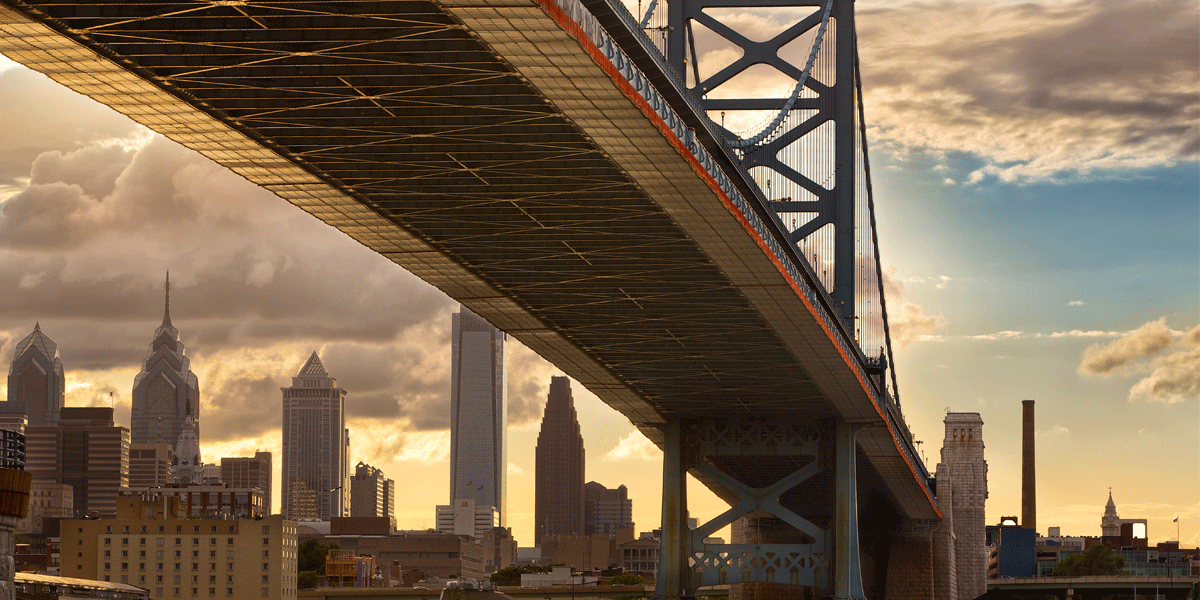Since his first day with ATS back in Nov. 2007, Josh has found success in a number of roles. Following his 5 year stint as a national carrier representative, Josh transitioned into the role of operations manager in ATS's logistics division. Today, Josh is the director of operations and continually strives to create lasting relationships with customers and carriers alike.
It’s no longer breaking news that the Francis Scott Key Bridge in Baltimore was hit by a massive cargo ship, Dali, on March 26, 2024. The bridge collapsed almost instantly — effectively blocking the port and all cargo coming and going.
But it does beg the question: What happens to drivers when infrastructure fails or we experience supply chain disruptions?
Supply chain disruptions happen for several reasons, including natural disasters, pandemics, political instability, economic crises, supplier issues, strikes, cybersecurity attacks, and changes in demand. And, as we saw at the end of March 2024, infrastructure issues such as a bridge at a major port collapsing, can cause issues too.
Anderson Trucking Service (ATS) has been around since 1955. We’ve dealt with our fair share of supply chain disruptions and helped carriers and drivers alike navigate them.
In this article, we’ll help you understand the steps you can take to ensure a timely and efficient delivery despite facing supply chain disruptions or infrastructure issues.
- What is a supply chain disruption?
- Baltimore: A case study in supply chain disruptions
- How to adapt to supply chain disruptions
Understanding Supply Chain Disruptions
A supply chain disruption is exactly what it sounds like — a disruption in the supply of products or their sale or distribution.
When the movement of products is hindered — whether because of natural disasters, extreme weather, product shortages, infrastructure issues, or economic influence — it causes a ripple effect in the transportation world not just seen by the company itself but by shippers, carriers, and drivers across the country.
Truck drivers keep the economy running smoothly. There’s no telling where we’d be without drivers like you on the road willing to be away from your families to keep important projects rolling and the shelves fully stocked. When supply chain disruptions occur, you’re at the front lines of that change. Adaptation has to be your middle name.
Each supply chain disruption is unique and there’s no telling how exactly to react.

Baltimore: A Case Study in Supply Chain Disruptions
The bridge collapse in Baltimore is the perfect example of a unique supply chain disruption that’s forced drivers to adapt.
A lot of people panicked about what to do after the Francis Scott Key Bridge collapse. Just a few weeks later and we’re still navigating it. For example, ship rerouting still isn’t set in stone.
The Key Bridge was on the eastern side of the Interstate 695 loop, which, as expected, caused an increase in traffic at the Fort McHenry Tunnel. The tunnel travels under a section of the port.
The Baltimore Harbor Tunnel is also being used more frequently. Drivers typically don’t frequent this tunnel because it’s two lanes and tighter for trucks to navigate. Hazmat loads have been rerouted to the west side of Baltimore — resulting in 20 extra minutes of commuting time.
Surprisingly, however, there haven’t been significant traffic increases out of the ports. A significant movement in drayage freight and drivers going to other ports is also yet to be seen.
Drayage drivers servicing Baltimore typically live in the area, so moving that freight away from the port would require drivers to be willing to leave the area. Currently, nearby ports aren’t seeing a huge uptick in freight. This could be because there’s a big freight push before Easter and then volume slows a bit.
One thing is for sure: Things are changing daily and any freight that was supposed to go to Baltimore is going elsewhere, so eventually truckers will need to accommodate this.
From the example above, you can see that drivers have had to reroute, deal with extra traffic and lower speeds, and add extra time to their commutes. Plus, change is yet to come.
Learn more about the HOS waivers the FMCSA granted to Baltimore drayage drivers
How to Adapt to Supply Chain Disruptions as a Driver
You know now just how messy supply chain disruptions can be. These tips will help you navigate them so you can do your job efficiently.
Tip #1: Trip Plan
It might sound like we’re beating a dead horse the way we’re constantly telling our drivers to trip plan, but any seasoned driver will tell you the exact same thing. A solid trip plan — completed each day you’re on the road driving — will help prevent surprises on the road.
A trip plan is even more important when there are infrastructure issues affecting lanes you normally traverse. Baltimore is the perfect example.
Rerouting is going to be a big issue, as are changes to the flow of traffic, if you’re traveling in the epicenter of supply chain disruptions or infrastructure issues. You have to be prepared for that.
Account for extra traffic, slower speeds, and increased transit times. You might not be able to drive as many miles as you’re used to when you’re navigating these changes. Plan several different spots you can stop for the night depending on how far you may or may not get.
You may decide to take a route to avoid this disrupted area altogether. If you do, make sure you weigh the cost of the extra fuel you’ll burn versus the time you’ll save.
Tip #2: Capitalize on Rate Increases
Obviously, supply chain disruptions have a big effect on the supply of products. This can cause rates to fluctuate, especially if the product is essential or in high demand.
You’ll also be more likely to see rate increases if you’re willing to go to the epicenter of infrastructure issues or supply chain disruptions.
For example, we’ve seen rates skyrocket to get supplies to hurricane victims in the Southeast. Drivers willing to go to the heart of the travesty not only help a great cause but get paid well to do so.
We saw the same thing happen during the pandemic. The world shut down and once it picked back up, rates skyrocketed. The supply of drivers couldn’t meet freight demand. The drivers who were willing and able to work during the pandemic made a ton of money.
Using Baltimore as an example again, the nearby ports may get abundant freight in the upcoming months. Drivers — especially drayage drivers — from the Baltimore area willing to go outside their usual route to haul this freight will likely see financial benefits.
Tip #3: Drive in Different Parts of the Country
Maybe you were used to taking a route from Chicago to the port in Baltimore and back. That obviously isn’t going to be something you can do for a little while. Your willingness to adapt and try out new lanes will help you succeed and earn more.
Every load is an opportunity. When your wheels are moving, you’re making money. You can’t hit a home run on every load, but being willing to take some risks can pay off.
You may even take the types of loads you wouldn’t normally haul. To succeed, you have to adapt to what’s happening in the world.
Tip #4: Communicate Proactively
You may deal with traffic delays, especially when navigating infrastructure issues. Be sure you communicate with your driver manager and the customers you’re working with. Even the best trip plans can’t prevent traffic jams and accidents.
Be proactive with your communication. Let your driver manager and customers know what’s going on before you’re four hours late to a delivery and they don’t know why.
Tip #5: Mind Your Money
During the height of supply chain disruptions, prices can increase drastically. Keep an eye on that. The cost of fuel may rise, insurance costs can drastically increase, and you may find yourself spending a lot more money on food on the road.
During the pandemic, for example, the shortage of workers led to disruptions in the truck supply chain. That caused the price of trucks and repairs to skyrocket.
Keep a pulse on how costs are changing so you can change your budget accordingly and save money where you can.
Succeed in Any Market
Truck drivers, central to keeping the economy moving, are often the first to face supply chain disruptions and infrastructure challenges head-on.
As we’ve seen with Baltimore, drivers must be flexible and prepared to reroute, face increased traffic, and adjust to slower speeds, which are critical to managing the unpredictability of such disruptions.
The Baltimore situation underscores the importance of trip planning, effective communication with both driver managers and customers, and being mindful of economic changes like rate increases or fuel costs.
With a little preparation and flexibility, you can navigate even the most sudden and significant disruptions.
When in doubt, you should always work with your driver manager through any challenges you may be experiencing.
If you’re looking to earn more, even in a tough economy, these top earner tips will help get you there.


